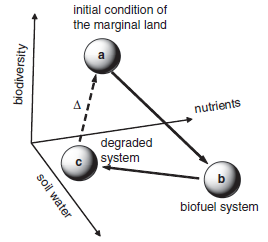Potential distribution of light brown apple moth

The highly polyphagous light brown apple moth (LBAM) ( Epiphyas postvittana (Walk.): Tortricidae) is indigenous to Australia and was first found in California in 2006. It is currently found in 15 coastal counties in California, but nowhere has it reached outbreak status. The USDA projects the geographic range of LBAM will include much of Arizona and California and the southern half of the U.S., which together with economic estimates of potential crop losses have been used as the rationale for an eradication program in California. We report a temperature-driven demographic model to predict the likely distribution and relative abundance of LBAM using the detailed biology reported by W. Danthanarayana and colleagues, and climate data from 151 locations in California and Arizona for the period 1995 to 2006. The predictions of our model suggest that the near coastal regions of California are most favorable for LBAM, the northern Central Valley of California being less favorable, and the de...


